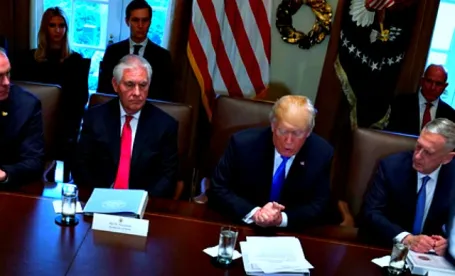On February 13, the Trump Administration released its proposal to finance improvements of the nation’s infrastructure. This proposal promotes the use of public-private partnership (“P3”) arrangements to fund these improvements by expanding exempt facility bonds (a type of tax-exempt private activity bond that can be used to finance a list of specific types of projects, such as airports, sewage facilities, etc.) so that tax-exempt bonds can be used more easily in conjunction with P3 arrangements. For example, many public infrastructure projects, such as convention centers, courthouses, and fiber optic networks, do not fit within the patchwork list of projects that qualify for private activity bond financing, and so they cannot be financed with tax-exempt bonds if the bonds would exceed the private activity limits.
The day after the Trump Administration released its proposal, House Ways and Means Chairman Kevin Brady made it clear that he does not support an expansion of tax-exempt private activity bonds($). If the scope of exempt facility bonds is not expanded to facilitate the more ready use of tax-exempt bonds in P3 financing structures, and Chairman Brady’s resistance could make this a likely outcome, P3 arrangements that wish to include tax-exempt bond financing will need to satisfy current law. One way to accomplish this objective is for the private party in the P3 arrangement not to be the owner or long-term lessee of the tax-exempt bond-financed property but instead to use this property under a management contract that complies with Revenue Procedure 2017-13 (which we have analyzed here, here, and here).
What if the P3 arrangement contemplates that the private party will hold attributes of ownership in the subject property that will result in excessive private business use of the bonds that would finance that property, so that the qualified management contract approach is not a solution? One technique, which is often used to allow the use of tax-exempt bonds to finance professional sports stadiums (which, since the Tax Reform Act of 1986, have not been among the list of projects that can be financed with exempt facility bonds), presents a potential alternative solution.
Under current law, a bond is generally a private activity bond if it is part of an issue (i) more than 10% of the proceeds of which are used to finance property that is used in a private business (“private business use test”) and (ii) more than 10% of the debt service on which is derived from, or secured by, private business use property (“private payment/security test”).1 The interest on a private activity bond is subject to federal income tax unless the bond is a “qualified” private activity bond, such as exempt facility bonds or qualified 501(c)(3) bonds, that are accorded tax-exempt status even though they are not governmental use bonds.
In a typical tax-exempt bond financing of a professional sports stadium, a state or local governmental unit owns the stadium and leases it for a significant term to a professional sports team. This results in private business use aplenty of the stadium, and it causes the bond issue that finances the stadium to satisfy the private business use test. The stadium lease, however, customarily provides (i) that the team will retain all revenue generated from its use of the stadium (ticket sales, concessions, merchandise sales, etc.) and (ii) for a stream of rental payments from the team to the state or local governmental unit that does not satisfy the private payment/security test.2 Generally applicable taxes secure the bond issue and are the source of payment of debt service on the issue, thus allowing the bonds to be issued as tax-exempt governmental bonds, because only the private business use test, not the private payment/security test, is satisfied. Where appropriate, this same technique can be used to finance with tax-exempt bonds property that will be part of a P3 arrangement.
And now it’s time for the second ever Public Finance Tax Blog quiz. The two images above are of FirstEnergy Stadium, Home of the Cleveland Browns (yes, that is the stadium’s official name) and Paul Brown Stadium (home of the Cincinnati Bengals). Both stadiums are named, directly or indirectly, after Paul Brown, who founded both the Browns and the Bengals. Both stadiums were also financed with tax-exempt bonds, using the above-described technique. Can you guess which of the above images is of Paul Brown Stadium and which is of FirstEnergy Stadium, Home of the Cleveland Browns? Keep scrolling for the answer . . . .
If you kept scrolling for the answer, then you learned nothing from the first ever Public Finance Tax Blog quiz. Absolutely nothing.
1. A private activity bond can also arise if more than 5% of the proceeds of the issue or $5,000,000 of such proceeds, whichever is less, is used to make loans to private parties. The private loan financing test is not at issue here.
2. In other words, the present value of the stream of rental payments, as reduced by the operating and maintenance costs of the stadium and as discounted by the yield of the bonds, does not exceed 10% of the present value of the debt service on the bond issue (i.e., 10% of the issue price of the bond issue).




 />i
/>i

